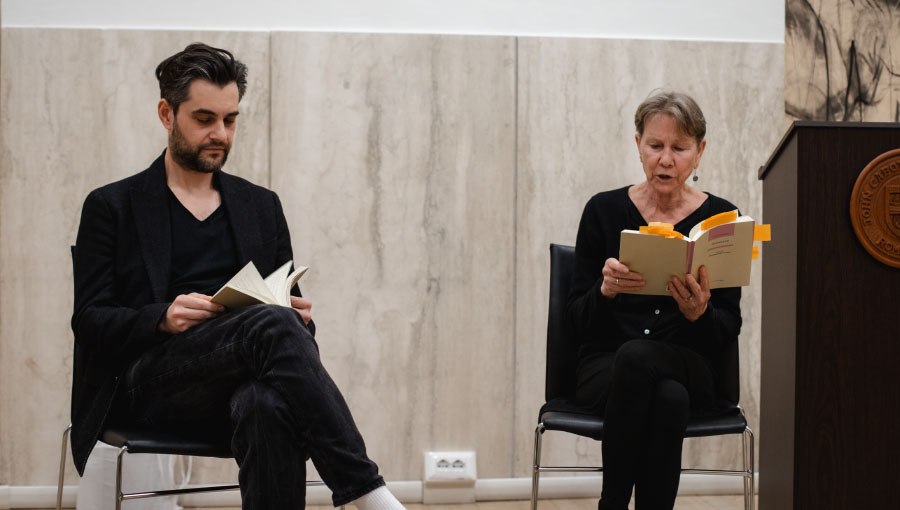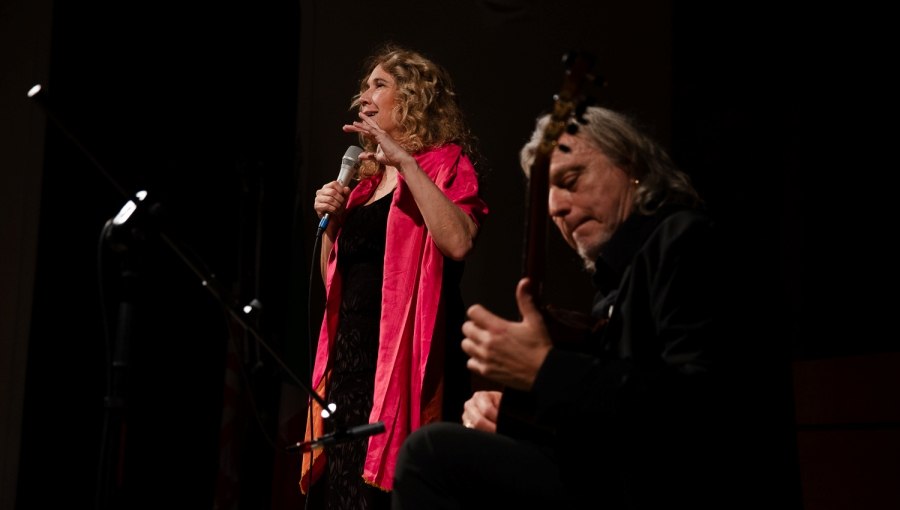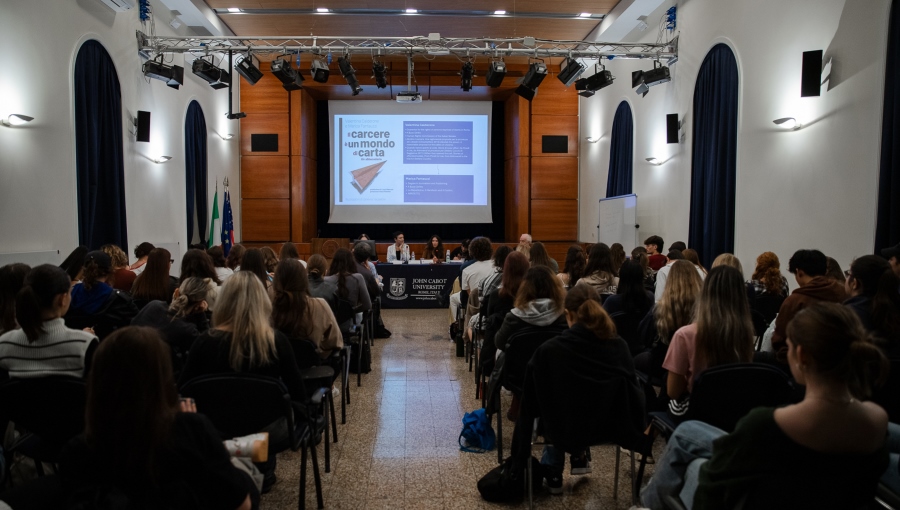JCU Presents The Sour Fruit: Lord Byron, Love & Sex by Vincenzo Patanè
“Lord Byron was the first rock star in history.” – Vincenzo Patanè
John Cabot University hosted a presentation of The Sour Fruit: Lord Byron, Love & Sex (John Cabot University Press / Rowman & Littlefield) on September 26, 2019. The book was presented by the author, journalist, and gay activist, Vincenzo Patanè, and Masolino d’Amico, translator, professor, and literary critic. JCU Professor James R. Schwarten, who edited the book, moderated the event. Professor Schwarten read excerpts from the book’s foreword by Professor Diego Saglia from the University of Parma, which described how The Sour Fruit provides a new insight into Byron’s life. The event was sponsored by the Departments of English Language and Literature and Modern Languages and Literature.
Translated by John Francis Phillimore, The Sour Fruit is Vincenzo Patanè’s second book on Byron. His previous book, called L’estate di un ghiro. Il mito di Lord Byron attraverso la vita, i viaggi, gli amori, le opere (The Summer of a Dormouse: The Myth of Lord Byron Through his Life, Travels, Loves and Works (Cicero 2013), provides a broader view on Byron’s life. The Sour Fruit, however, documents the poet’s versatile sexuality in order to shed light on this little known aspect of his life.

The Sour Fruit: Lord Byron, Love & Sex (from the left: Professor James R. Schwarten, Masolino d’Amico, and Vincenzo Patanè)
Byron was famous for his romantic encounters with women, said Patanè, but his male affairs were kept a secret. In England, homosexuality was persecuted, and could even lead to the death penalty. As Patanè explained, non-heterosexual men often faced the choice “to either be very discreet or to go outside of England, for example by going on the Grand Tour.” This cultural voyage throughout Europe was very popular among upper-class men during the 17th and 18th-centuries.
Patanè examined, among other things, the correspondence between Byron and his male lovers. He explained that “there are many nuances in his works referencing sexuality or even homosexuality, but Byron hid them between the lines.” In fact, the title of Patanè’s book was inspired by Byron’s poem Don Juan (1819-1824), where the poet referred to attractive young men as ‘sour fruit.’
Masolino d’Amico emphasized that never before has anyone researched Byron’s works with the goal “to truly discover who he really was.” Perceived by English society as a living legend, “Lord Byron was an extraordinary person,” said Patanè, “who appealed to both heterosexual and homosexual people alike.” He told an anecdote in which Byron rented a villa at Lake Geneva, while several English women rented villas on the opposite side of the lake so that they could observe him with binoculars. “Byron doesn’t seem so handsome from the portraits,” noted d’Amico, “but everyone who saw him was struck by how attractive he was.”
Patanè underlined Byron’s modern approach to writing since he eventually turned to more unconventional and satiric forms. “He wrote Don Juan which is a very modern work, full of bathos (anticlimax achieved by an unexpected change of mood), very ahead of its time.” Patanè added that “Byron was a global-minded man, fully immersed in the histories of people of the country he happened to visit.” According to Patanè, “it’s a pity that, especially in Italian public consciousness, Lord Byron is regarded as a great writer of Romanticism, whereas he was much more than that.”





